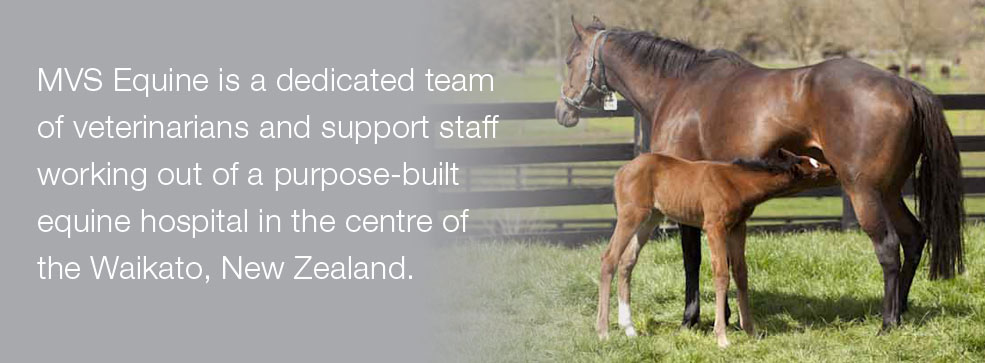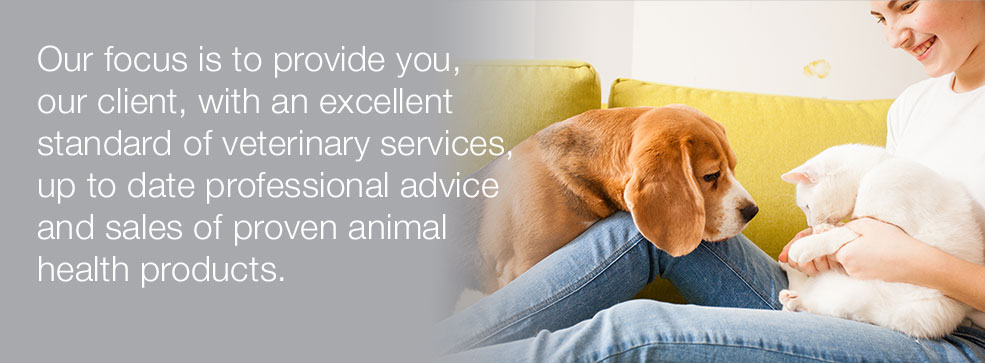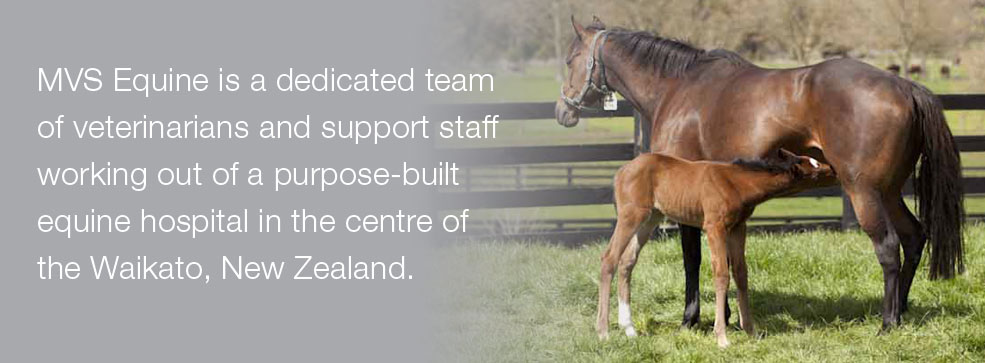Equine Vaccinations in NZ
Equine Vaccinations in NZ
June 11, 2012
Equine Vaccinations in NZ
Tetanus
Tetanus is caused by infection of wounds with spores of the Clostridium tetani bacteria, which are found in soils contaminated with animal manure.
Horses are highly susceptible to tetanus which is a serious disease when it occurs, causing nervous signs such as extension of the limbs, convulsions and respiratory failure and often results in death. It is very difficult to treat and most infected animals die as a result of the disease.
Routine vaccination offers good protection against disease. Currently we use Equivac T.
The recommended programme for tetanus vaccination is:
Initial vaccination course:
For all young stock and adults with lapsed or unknown vaccination history:
- Two vaccinations are given, four weeks apart, from three months of age, although often this initial course is given at weaning time.
- A third vaccination is given at no more than 1 year from the second vaccination.
- This results in long lasting immunity and boosters should be given at least once every 3 to 5 years.
Broodmare vaccination:
- Vaccinate the mare 4-6 weeks before foaling to boost the colostral antibodies and therefore help provide the foal with immunity from birth.
Tetanus antitoxin:
Equivac TAT (tetanus antitoxin) provides immediate protection against tetanus in the short term but it is not a vaccination.
- It should be used in newborn foals whose dams have not been boosted in the last 4-6 weeks of pregnancy or foals that have not received adequate colostrum (e.g.; with mares that run milk prior to foaling, or if the foal has a low IGG blood sample etc).
- TAT can be used at the time of surgery, such as castration, or if a horse has an injury/wound. This is especially important in young stock or other horses that have not completed their initial vaccination course.
Strangles
Strangles is a highly infectious bacterial disease of horses, often occurring in outbreaks when susceptible horses are brought together. It causes abscess formation in the lymph nodes of the head and neck. Large swellings around the throat can cause death (classic “strangles” appearance). Abscesses can occur in other areas of the body. If treatment starts early enough most horses will recover although this is prolonged and leads to poor growth rates.
Equivac S or Equivac 2 in 1 vaccine (which combines tetanus and strangles vaccinations) can be used.
Initial vaccination course:
Young stock, or adults with lapsed or unknown vaccination history:
- Three vaccinations are required, each at two-week intervals. If tetanus vaccination is started at the same time the following program is used.
- Equivac 2 in 1
- Two weeks later Equivac S
- Two weeks later Equivac 2 in 1
- Vaccination can start from three months of age, however is often started at the time of weaning.
- A booster vaccination is required annually.
Broodmare vaccination:
- Vaccinate the mare 4-6 weeks before foaling to boost the colostral antibodies- this can be combined with tetanus vaccination.
- The breeding season is a period of high risk of strangles infection and so booster vaccination 4- 6 weeks before dry mares are moved from their usual property is advised.
Pinnacle:
An alternative vaccination against Strangles is available in the form of a live, attenuated, intranasal vaccination (Pinnacle I.N.). This requires an initial course of two doses, administered 2-3 weeks apart. Thereafter an annual booster is required at not more than 12-month intervals. In the event of an outbreak, or high risk situations (mixing of horses, high turnover of horses at a property) horses may receive a booster every six months to ensure maximal protection.
Vaccination can start from 4 months of age. Talk to a veterinarian to decide if this is a better vaccine to use for your horse(s).
Equine Herpes Virus (EHV)
The most common types of Equine Herpes virus (EHV) found in domestic horses are EHV –1, -2, -3, -4 and –5.
Table 1: Clinical Diseases associated with the different types of Equine Herpes virus commonly found in Domestic horses.

Both EHV1 and EHV4 can persist as latent infections in subclinical carriers. Infection can be reactivated during periods of immunosuppression and stress (e.g., pregnancy, transport, social stress).
If EHV1 infects a pregnant mare, she may not even show respiratory symptoms however the infection can spread through the blood stream and infect the fetus. Abortion is caused by detachment of the placenta. Abortion can occur soon after the mare is infected but also may occur several weeks later.
EHV1 is responsible for most late gestation abortions (>7months).
Vaccination is an important part of controlling the disease and reducing the risk of abortion caused by EHV1. Currently we use PneumequineTM vaccine.
Only healthy horses should be vaccinated and at least 7 days should elapse between different types of vaccine.
An initial vaccination course is required:
Either:
- Vaccinate prior to service. Two primary vaccinations are given 30 days apart, the last of which should be administered at least 14 days prior to service. Followed by a third injection in the 5th month of pregnancy.
- For mares not vaccinated prior to service, a course of three vaccinations is required- in the 4th, 5th and 7th months of pregnancy.
Annual booster vaccination is then required (for all mares) at no more than a 12-month interval, which should ideally fall in the 4th or 5th month of pregnancy (if pregnant).
For mares that are pregnant, have not received any vaccination, and have missed the opportunity to complete the initial course whilst pregnant, the following protocol is recommended:
- Two vaccinations to be given 30 days apart. An initial course will be required when she is next bred, as outlined above.
Vaccination does not provide absolute protection and so preventative measures must be followed.
- New arrivals should be isolated for 3 weeks and monitored for signs of illness. Monitoring rectal temperature can be very useful. The normal adult rectal temperature is 37.5 – 38.50C.
- Group pregnant mares according to stage of gestation and avoid mixing groups.
- Pregnant mares should be isolated from other horses, especially weanlings and those returning from training facilities/competition as these will be at high risk of reactivating subclinical, latent viral infection.
- Sick horses should be quarantined, away from healthy horses and strict hygiene procedures should be established.
- Keep stress, such as handling and transport to a minimum.
- Notify your veterinarian of any abortion and keep the fetus and membranes for examination and sampling.
- Isolate mares that abort and do not let other horses contact the aborted fetus or membranes.
Salmonella
Infection with salmonella causes severe diarrhoea which is life threatening, especially in younger horses. It is a highly contagious disease that is very difficult disease to treat and is often fatal.
The recommended programme for salmonella vaccination is:
- Broodmares must be vaccinated 4 to 6 weeks before foaling to boost antibodies in her colostrum and therefore help provide the foal with immunity from birth.
- Vaccination of foals can start from three months of age, however it is often started at the time of weaning.
- Foals require 2 doses of vaccine given 30 days apart.
- A booster vaccination is required annually.
Rotavirus
Infection with rotavirus causes diarrhoea in foals usually during the first 2 weeks of life. Foals with rotaviral diarrhoea become dehydrated very quickly and will die if not treated appropriately.
As rotavirus affects foals at such an early age, protection is delivered through antibodies in the colostrum which are developed via vaccination of the mare before the foal is born. Vaccination of the foal itself is not indicated.
The recommended programme for rotavirus vaccination is:
- Pregnant broodmares should be vaccinated in the 8th, 9th and 10th months of pregnancy.
- This 3 dose schedule must be repeated with each subsequent pregnancy.




